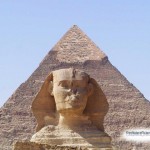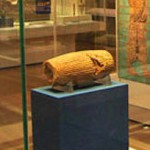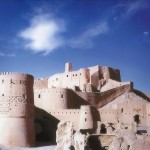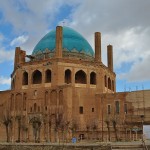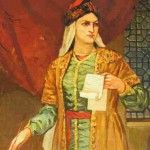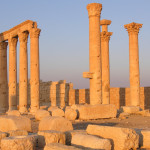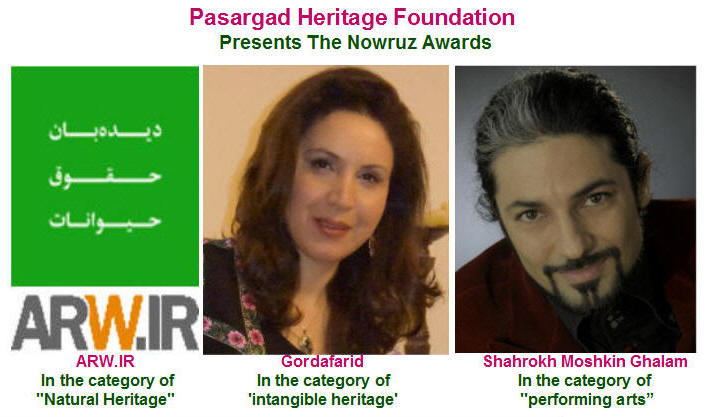 The Pasargad Heritage Foundation has announced The 2015 Nowruz Awards. Animal Rights Watch was presented the award in the field of Natural Heritage, Intangible Heritage was awarded to Ms. Gordafarid, and Mr. Shahrokh Moshkin Ghalam received the award for Performing Arts. Read more about each recipient by clicking on their names.
The Pasargad Heritage Foundation has announced The 2015 Nowruz Awards. Animal Rights Watch was presented the award in the field of Natural Heritage, Intangible Heritage was awarded to Ms. Gordafarid, and Mr. Shahrokh Moshkin Ghalam received the award for Performing Arts. Read more about each recipient by clicking on their names.
1394 (2015) The Year of Omar Khayyam
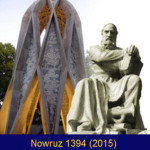 Pasargad Heritage Foundation (PHF) was established a decade ago outside Iran with the aim of preserving Iranian cultural heritage. For the last nine years, on the advent of each Iranian New Year (which coincides with the beginning of spring), PHF designates a name for the coming new year that signifies certain aspects of its mission. The main purpose of this “name designation” is to emphasize the priceless value of the ancient cultural heritage of Iran that are exposed to constant destruction due to intentional and accidental negligence of the relevant authorities n Iran.
Pasargad Heritage Foundation (PHF) was established a decade ago outside Iran with the aim of preserving Iranian cultural heritage. For the last nine years, on the advent of each Iranian New Year (which coincides with the beginning of spring), PHF designates a name for the coming new year that signifies certain aspects of its mission. The main purpose of this “name designation” is to emphasize the priceless value of the ancient cultural heritage of Iran that are exposed to constant destruction due to intentional and accidental negligence of the relevant authorities n Iran.
This year PHF has named the New Year of the Iranian calendar as the “Year of Omar Khayyam”. Khayyam has been an internationally known Iranian poet (known by his famous Rubaiyat or Quatrains), philosopher, mathematician and an astronomer. In addition to being known for his poetry or Rubaiyat, he also created one of the three major world solar calendars, based on the ancient Iranian chronometry which was also accepted as a major accurate calendar globally.
Unfortunately, due to his non-religious opinions and his scientific outlook, Omar Khayyam has not been popular with the religious authorities of his country. During the last seven years, Iranian authorities have forbidden teaching about his work, personality and as a result account of life story has been changed.
Naming the New Iranian year, the “Year of Omar Khayyam” would hopefully bring more recognition and awareness of his contributions not only to Iranian Cultural Heritage a country he was from but also to the human civilization.
Destruction of thousands of books and manuscripts in Mosul libraries
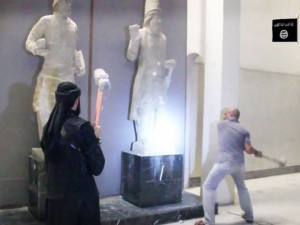 According to recent reports Mosul’s central library has been ransacked by ISIS and 100,000 books and manuscripts have been burnt. The extremists group has released a video purportedly showing its fighters using sledgehammers to smash ancient artifacts in Iraq’s northern city of Mosul.
According to recent reports Mosul’s central library has been ransacked by ISIS and 100,000 books and manuscripts have been burnt. The extremists group has released a video purportedly showing its fighters using sledgehammers to smash ancient artifacts in Iraq’s northern city of Mosul.
The five-minute video shows a group of bearded men in a museum using hammers and drills to destroy several large statutes, including one depicting a winged-bull Assyrian protective deity that dates back to 9th century BC.
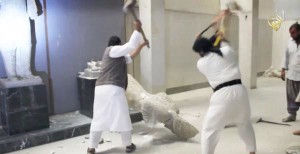 ISIS, Islamic State has destroyed a number of shrines, including Muslim holy sites as well as Christian places of worship and history including biblical manuscripts.
ISIS, Islamic State has destroyed a number of shrines, including Muslim holy sites as well as Christian places of worship and history including biblical manuscripts.
UNESCO announces the winning center design in Afghanistan
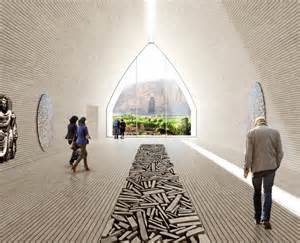 As reported by a number of news outlets, a proposal to carve a cultural centre out of the landscape has won the UNESCO design contest for a Bamiyan Valley site where two seventh-century statues of Buddha were destroyed by Taliban militants. Out of many applicants and design presentations, UNESCO picked and has now named an Argentina-based team led by architect Carlos Nahuel Recabarren as the winner of the competition. UNESCO had asked entrants to design a building for the edge of a valley in the central highlands of Afghanistan – a key Buddhist site on the ancient Silk Road trading route.
As reported by a number of news outlets, a proposal to carve a cultural centre out of the landscape has won the UNESCO design contest for a Bamiyan Valley site where two seventh-century statues of Buddha were destroyed by Taliban militants. Out of many applicants and design presentations, UNESCO picked and has now named an Argentina-based team led by architect Carlos Nahuel Recabarren as the winner of the competition. UNESCO had asked entrants to design a building for the edge of a valley in the central highlands of Afghanistan – a key Buddhist site on the ancient Silk Road trading route.
The winning proposal which is named “Descriptive Memory” presents the concept of “The Eternal Presence of Absence” and aims to envision a public park that extends out to meet the rooftops of a sunken building complex. These structures will surround a public plaza with a reflective pool on one side. The winning team has stated their design thinking in a statement that reads; “Our proposal tries to create not an object-building but rather a meeting place; a system of negative spaces where the impressive landscape of the Buddha Cliffs intertwine with the rich cultural activity that the centre will foster”.
It has been reported that the foothills of the cliffs along the valley feature several caves dating from between the third and fifth century, which were used as Buddhist monasteries, chapels and sanctuaries. The cliffs themselves once housed two giant seventh-century carvings of Buddha, standing at 55 meters and 35 meters high, but these were destroyed by Taliban forces in 2001.
Following an intervention to prevent an unauthorized team of German archaeologists from reconstructing the statues, UNESCO teamed up with the Afghan government’s Ministry of Information and Culture to launch a competition for a new building on the site at the end of 2014. Then, the winning design was anonymously selected from 1,070 proposals by a jury of seven experts, including Architecture for Humanity co-founder Cameron Sinclair and the Cooper Union’s acting dean Elizabeth O’Donnell. The jury praised the concept for its well-conceived plan, sensitive site strategy, and choice of brick as building material, elegant curving passageways, and appropriate consideration of scale. The financial support has been contributed by the Republic of Korea and the project will immediately move towards construction on a budget of $2.5 million. In addition to the activities surrounding the building of this site, the Afghan government plans to launch a national program to support cultural diversity, which will include a nationwide archaeological survey and targeted activities to safeguard minority rights across the country.
Destruction of Cultural Heritage and Book Burning by Extremists
 On Tuesday last week, UNESCO voiced concerns over reports of mass book-burning in Iraq, saying that it is the most “devastating” of such actions in history if confirmed.
On Tuesday last week, UNESCO voiced concerns over reports of mass book-burning in Iraq, saying that it is the most “devastating” of such actions in history if confirmed.
Recent reports from Iraq show that books on philosophy, law, science and poetry have been torched by the armed extremists who are targeting cultural heritage. UNESCO Director-General Irina Bokova said that it was part of a campaign of “cultural cleansing”, adding that “Such destruction is a cruel reminder that the nations of the world must remain united to combat such fanaticism today,” Bokova added.
Islamist State extremists currently hold the city of Mosul, the second-largest city in Iraq and have been destroying cultural and national heritage sites in both Iraq and Syria.
Mystery mummies uncovered in Russia
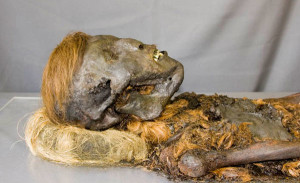 As reported in several news outlet as well as the Siberian Times, a team of archeologists have uncovered mummies which are believed to have connections to ancient Persia. Archaeologists have resumed excavations at Zeleniy Yar, a remote site near the Arctic Circle known to the indigenous Nenets people as “the end of the earth”. In a previous excavation, the team had found a dozen mysterious mummies who appear to have been foreign to the region, and whose artifacts can be traced back to ancient Persia, nearly 6,000 kilometres (3,700 miles) away. For now, scientists are undertaking genetic testing to determine the actual origins of the mummies.
As reported in several news outlet as well as the Siberian Times, a team of archeologists have uncovered mummies which are believed to have connections to ancient Persia. Archaeologists have resumed excavations at Zeleniy Yar, a remote site near the Arctic Circle known to the indigenous Nenets people as “the end of the earth”. In a previous excavation, the team had found a dozen mysterious mummies who appear to have been foreign to the region, and whose artifacts can be traced back to ancient Persia, nearly 6,000 kilometres (3,700 miles) away. For now, scientists are undertaking genetic testing to determine the actual origins of the mummies.
About a decade ago another team of Russian archaeologists discovered 34 shallow graves and mummified corpses in what appears to be a necropolis dating back 800 years. However, excavations stopped after the local people expressed concerns that the work was disturbing the souls of their ancestors, a plea which has been ignored by the current team of researchers, headed by Alexander Pilipenko, research fellow of Institute of Cytology and Genetics, part of the Siberian Branch of the Russian Academy of Sciences.
The finding was extremely rare as the team explains that the mummies were found in a well-preserved state, seemingly by accident, and wearing copper masks. Seven male adults, three male infants, and one female child were discovered, buried among jewelry and other artifacts. Their skulls are shattered or missing, while the skeletons were smashed. Five mummies are covered in copper, as well as reindeer, beaver, wolverine, or bear fur. One of the mummies is a red-haired male, protected from chest to foot by copper plating. In his resting place, were an iron hatchet, furs, and a head buckle made of bronze depicting a bear.
Researchers believe that the mummification of the bodies was not intentional but was caused by a combination of the copper, which prevented oxidation of the remains, and a drastic change in temperatures in the centuries after the group was buried. The scientists also believe that the condition and orientation of the remains reflect some type of religious ritual. However, such burial rituals are unknown to experts and not typical of others in the region, which suggests that the mummies belong to a foreign race of people. Indeed, the artifacts suggest this possibility. Some of the items found at the site, including bronze bowls, originated in Persia and dating from the 10th or 11th centuries. The discovery adds to the evidence that Siberia was not an isolated wasteland but a crossroads of international trade and cultural diversity.
New tomb found in Egypt
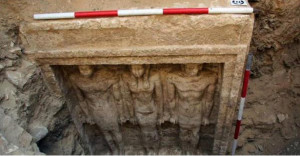 A team of Czech archeologists have discovered the tomb of Queen Khentakawess III’s tomb in Egypt.
A team of Czech archeologists have discovered the tomb of Queen Khentakawess III’s tomb in Egypt.
Archaeologists unearthed the tomb of a previously unknown queen. The tomb was found in Abu-Sir, south-west of Cairo, and is thought to belong to the wife or mother of Pharaoh Neferefre who ruled 4,500 years ago. Egyptian Antiquities Minister Mamdouh el-Damaty said that her name, Khentakawess III, had been found inscribed on a wall in the necropolis as reported by BBC. The tomb was discovered in Pharaoh Neferefre’s funeral complex. Abu-Sir was used as an Old Kingdom cemetery for the ancient Egyptian capital of Memphis.
The archeologists and experts at the Egyptian Antiquities Ministry believe that the discovery could shed light on certain unknown aspects of the Fifth Dynasty, which along with the Fourth Dynasty, witnessed the construction of the first pyramids.
7,000-year-old skeleton found in Iran
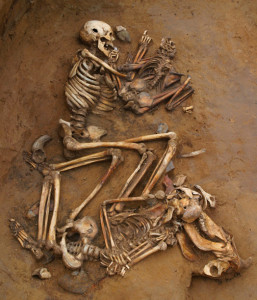 A team of archeologists have found A human skeleton in Tehran suggesting that life in the city dates back to the 5th millennium B.C. Archaeologists found the 7,000-year-old skeleton in an excavation in Molavi Street in the south of Tehran and they believe that the human bones belong to 5,000 year B.C.
A team of archeologists have found A human skeleton in Tehran suggesting that life in the city dates back to the 5th millennium B.C. Archaeologists found the 7,000-year-old skeleton in an excavation in Molavi Street in the south of Tehran and they believe that the human bones belong to 5,000 year B.C.
Previously, the oldest archaeological findings ever found in Tehran belonged to city’s Qeytarieh hills, which dated back to the first millennium B.C. Many other historic items, most of them belonging to the previous centuries, have also been excavated in the site, which is located around Tehran’s Grand Bazaar according to several news agencies in Iran.
The excavated skeleton will be on display in Iran’s national museum after some scientific tests are completed.
Chinese archaeologists unearth 2,800-year old tombs
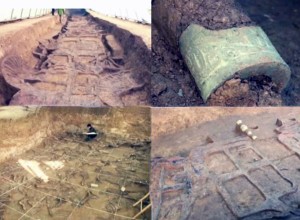 As reported by several news outlets, a team of Chinese archeologists have discovered a tomb believed to date back 2,800 years ago. The set of elaborate tombs surrounded by 28 chariots and 98 horses in the province of Hubei in China is an incredible discovery dates back to a time when high-ranking nobles demonstrated their power and strength through the ownership and display of horse-led chariots.
As reported by several news outlets, a team of Chinese archeologists have discovered a tomb believed to date back 2,800 years ago. The set of elaborate tombs surrounded by 28 chariots and 98 horses in the province of Hubei in China is an incredible discovery dates back to a time when high-ranking nobles demonstrated their power and strength through the ownership and display of horse-led chariots.
The researchers unearthed 30 elite tombs of various sizes in the city of Zaoyang. Researchers believe that the tombs date back to what is known as the Summer and Autumn Period in Chinese history (770 – 476 BC), which corresponds roughly to the first half of the Eastern Zhou dynasty. This period in Chinese history was characterized by the creation of powerful states and the birth of a wealthy merchant class as reported by ancient-origins. Researchers know that during that period a noble’s power was demonstrated through the number of chariots he owned.
Destruction of Forests in Iran
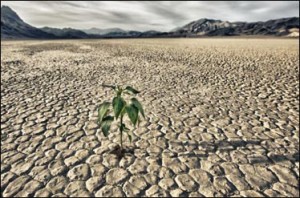 Iran continues to rank one of the highest in the world in terms of soil erosion and the destruction of forests. In a recent conference titled “Clean Air Day”, Mohsen Jafari, Deputy Director of Environmental Protection Agency (of Fars province) officially announced the drying of 10 wetlands in the Fars Province. He said that there is no longer opportunity and time for long-term planning and there is urgent need to take immediate actions.
Iran continues to rank one of the highest in the world in terms of soil erosion and the destruction of forests. In a recent conference titled “Clean Air Day”, Mohsen Jafari, Deputy Director of Environmental Protection Agency (of Fars province) officially announced the drying of 10 wetlands in the Fars Province. He said that there is no longer opportunity and time for long-term planning and there is urgent need to take immediate actions.
Mr. Jafari talked about the need for land use planning, careful consideration in building dams and finally about his regret in Iran’s soil erosion and loss of forest areas.
For many years, the natural heritage and environmental activists and experts have repeatedly stated the same concerns. However, these concerns and statements have never been taken seriously by the governmental and local agencies.



